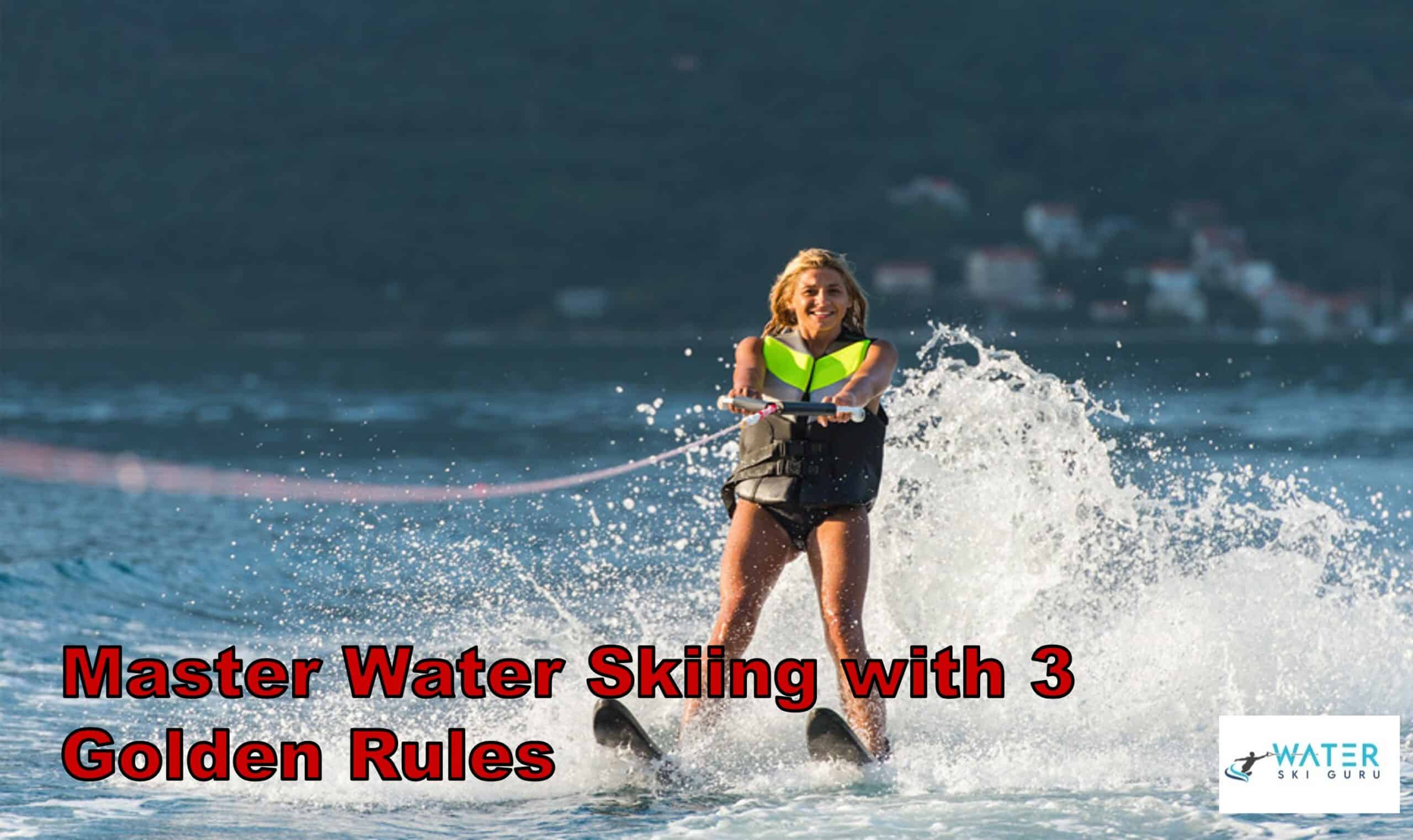Did you know that water skiing is not only a thrilling water sport, but it’s also a great way to build strength and endurance? According to a recent study, water skiing can burn up to 400 calories in just 30 minutes!
However, as a beginner, it can also be a daunting and intimidating experience. That’s why I want to share with you the three golden rules of water skiing that will help you navigate the waters with ease and grace.
These golden rules are essential for anyone who wants to master water skiing. By keeping your arms straight, knees bent, and not letting go until it’s time, you’ll be able to stay on top of the water and enjoy the ride.
In this article, we’ll dive deeper into each of these rules and also discuss common mistakes to avoid, the benefits of bent knees, and the importance of grip strength. With these tips, you’ll be well on your way to becoming a pro at water skiing and experiencing the exhilaration that comes with it.
So, let’s get started!
Techniques for Success
I can master water skiing by following the three golden rules and implementing techniques for success.
One important technique is to keep my knees bent for balance control and shock absorption. When my knees are bent, I have a lower center of gravity, which helps me stay balanced on the skis. Additionally, bent knees act as shock absorbers, lessening the impact of choppy water or sudden movements.
Another technique for success is to maintain a strong grip on the rope for safety. This requires grip strength, which can be improved with exercises such as squeezing a tennis ball or using grip trainers. It’s important to hold onto the rope tightly, but not so tightly that it restricts movement.
By following these techniques, along with the three golden rules of water skiing, I can increase my chances of success and enjoy the thrilling sport of water skiing.
Common Mistakes to Avoid
Bent arms are like anchors, causing you to sink and lose balance while attempting to glide through the water on skis. It’s a common mistake that beginners make, but it’s important to remember that straight arms are the key to success in water skiing. Proper arm positioning not only helps with balance, but it also prevents falling and injury.
Here are three dangers of straight legs to keep in mind:
- Straight legs are bad for getting up and staying up on skis.
- Straight legs in turns prevent proper engagement with water.
- Bending arms can lead to falling.
By keeping your arms straight and your knees bent, you’ll have better control and be able to absorb shock while skiing. Remember, success in water skiing comes from following the Golden Rules and avoiding common mistakes.
Importance of Grip Strength
Maintaining a strong grip on the rope is crucial for water skiing. Without it, you risk falling and getting injured. To improve grip strength, there are many exercises and equipment that can be used.
For example, wrist curls, grip strengtheners, and pull-up bars can all help build the necessary strength. It’s important to also vary the exercises to avoid plateauing and to continue challenging your grip strength.
In addition to exercises, equipment such as gloves and handlebars can also aid in maintaining a strong grip. Gloves provide a better grip on the rope, while handlebars allow for a firmer grip and can reduce strain on the wrists. It’s important to find the right equipment for you and to ensure that it’s properly fitted.
With improved grip strength and the right equipment, you’ll be able to stay up on the skis for longer periods, making for a more enjoyable and successful water skiing experience.
Frequently Asked Questions
What are some common injuries that can occur while water skiing?
Injuries are a risk when water skiing, but prevention techniques can reduce the likelihood. Common injuries include sprains, strains, and cuts. Recovery methods include rest, ice, compression, and elevation. Stay safe and have fun on the water!
Is it necessary to have prior experience in skiing or wakeboarding before trying water skiing?
You don’t need prior skiing or wakeboarding experience to try water skiing. Benefits of water skiing for fitness include improved balance and strength. Techniques for beginners involve keeping arms straight, knees bent, and not letting go until it’s time.
How can weather conditions affect water skiing?
Weather conditions can greatly affect water skiing. Always check for high winds or choppy waters before hitting the lake. As a beginner, focus on proper technique and grip strength to ensure water skiing safety.
What are some tips for choosing the right equipment for water skiing?
When selecting equipment for water skiing, consider your skill level. Beginners may benefit from wider skis, while advanced skiers may prefer narrower skis. The right bindings, rope, and life jacket are also important for safety and comfort.
What are some alternative forms of water skiing that beginners can try?
If you’re just starting out with water sports, cable skiing and kneeboarding are great alternatives to traditional water skiing. Both offer a fun and exciting way to experience the thrill of being pulled behind a boat without the added difficulty of balancing on skis.

